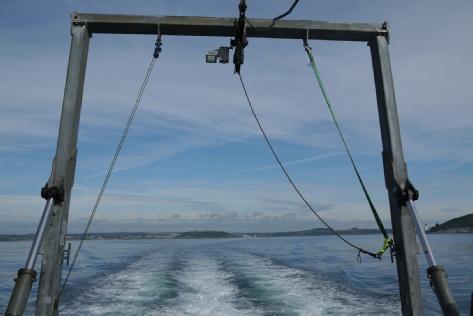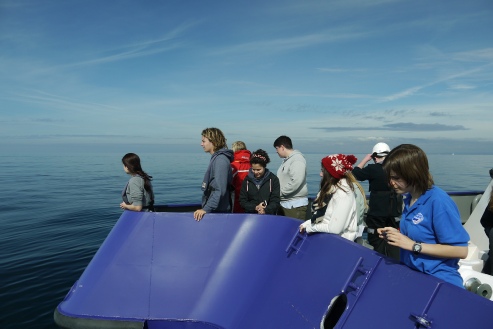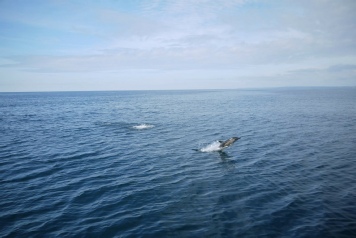
Disclaimer: the views and opinions expressed are those of Group 9 members and not necessarily those of the University of Southampton, National Oceanography Centre or Falmouth Marine School


By looking at the data we have obtained while on the RV Callista we can see that most of the results revolve around the stratification of the water column and whether or not the fronts are present. In our initial findings this seems to be dependent on the distance of the stations from the shore. It is also visible that the biology, chemistry and physics of each station are all intertwined in one way or another.
When analysing the physical structure of each site it was clear that the water masses at the offshore stations were highly stratified with easy distinction between the water masses based on a strong thermocline, pycnocline and haloclines (though the changes in salinity at these points were only small). There were even secondary thermoclines present due mixing only being present at the surface. The inshore, shallow station (15) on the other hand showed evidence of mixing with temperature gradually changing over the whole water column (though there is an area of increase in this gradient but it is still only gradual), the salinity remained fairly constant. This is because the tidal forces and wind mixing have a larger effect on this site as it is shallower rather than at the deeper stations.
This stratification seen at 13 and 14 also helps dictate some of the biology at the area with the deep chlorophyll maximums occurring at the thermoclines. At the thermocline phytoplankton can grow taking advantage of the light levels without being over exposed and are in an ideal position to take advantage of the small amount mixing of nutrient richer deep water between water bodies. The greatest abundance of phytoplankton occurs at these medium depths to shallower with the double thermoclines helping with the increased abundance. By being above the thermocline phytoplankton is safe from being mixed below the euphotic zone. This may be why deeper surviving and heterotrophic phytoplankton are more abundant below the thermocline than other forms as they are the only forms that could survive. Though Station 15 has a lower abundance of phytoplankton that Station 14, it has a larger range of phytoplankton than the other two sites which would be to do with some of the shallow water features.
The chemical features of all our stations appear to be quite dependant on the biology of the sites. The nitrate at Stations 13 and 15 increases with depth (after the chlorophyll maximum at Station 15) due to the phytoplankton stripping it out of the surface waters for growth, this also takes place for most of the other vital chemicals for their growth such as phosphate and oxygen. However for station 14 there is little change in the nitrate levels which suggest that the phytoplankton there are not nitrate limited but instead limited by something else. The changes in silicon levels are rather unusual compared to what is expected. Silicon should be stripped from the surface levels and slowly increase with depth however the surface water during out research trip appeared to hold high levels of Si and only decrease at the chlorophyll maximum. This decrease at the chlorophyll maximum is likely to do with diatoms present at this level and suggests that there are no diatoms present at the surface layers. There is no increase in Si below the thermocline due to a lack of mixing.
This data has given us an interesting insight into the processes present at different offshore stations and have allowed us to begin to understand how these different processes have affected the biology and chemistry of the area. We will now be able to understand how a deeper offshore environment compares to a shallow station.

Figure 3 -


Figure 1 -
Figure 2 -